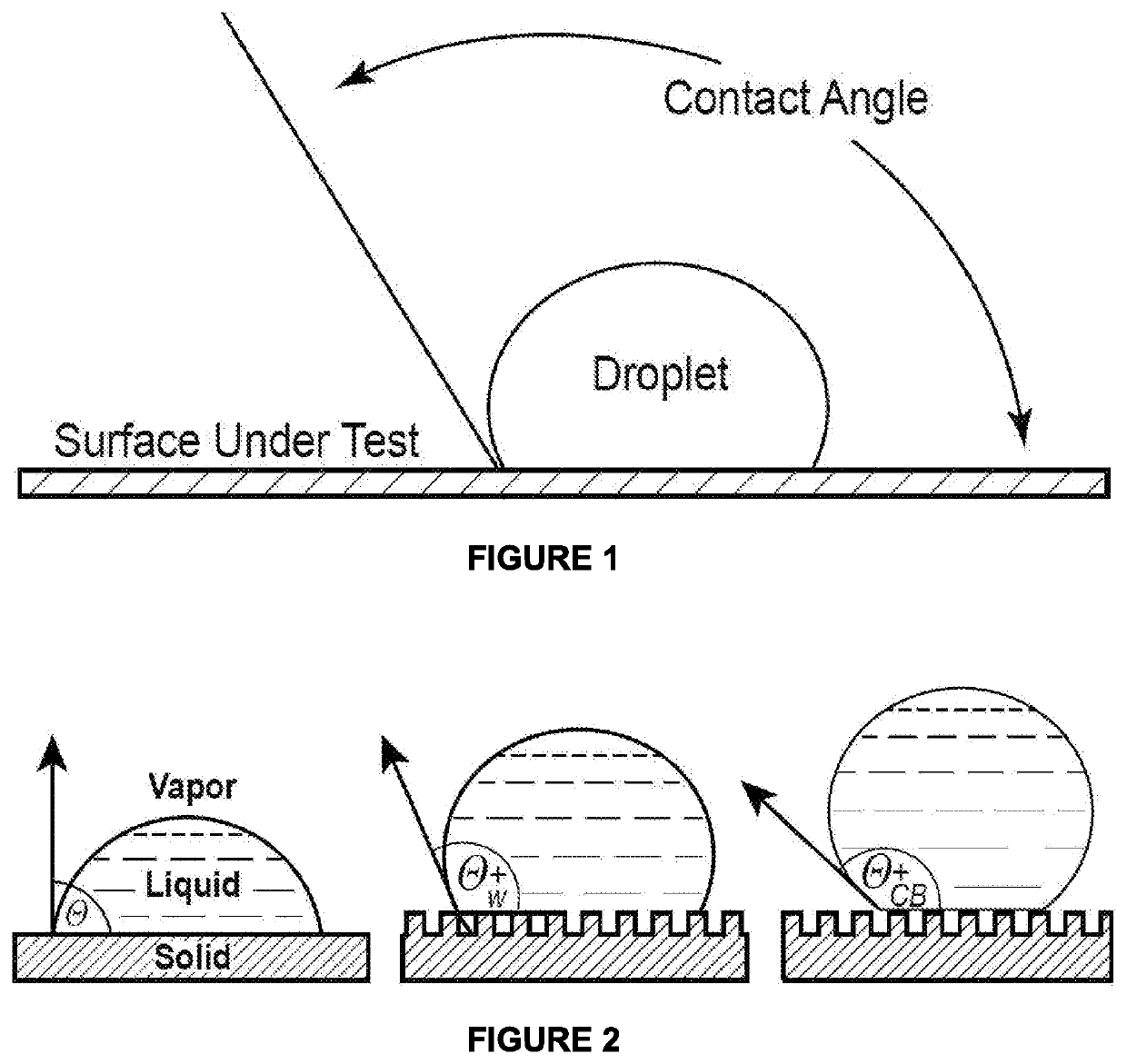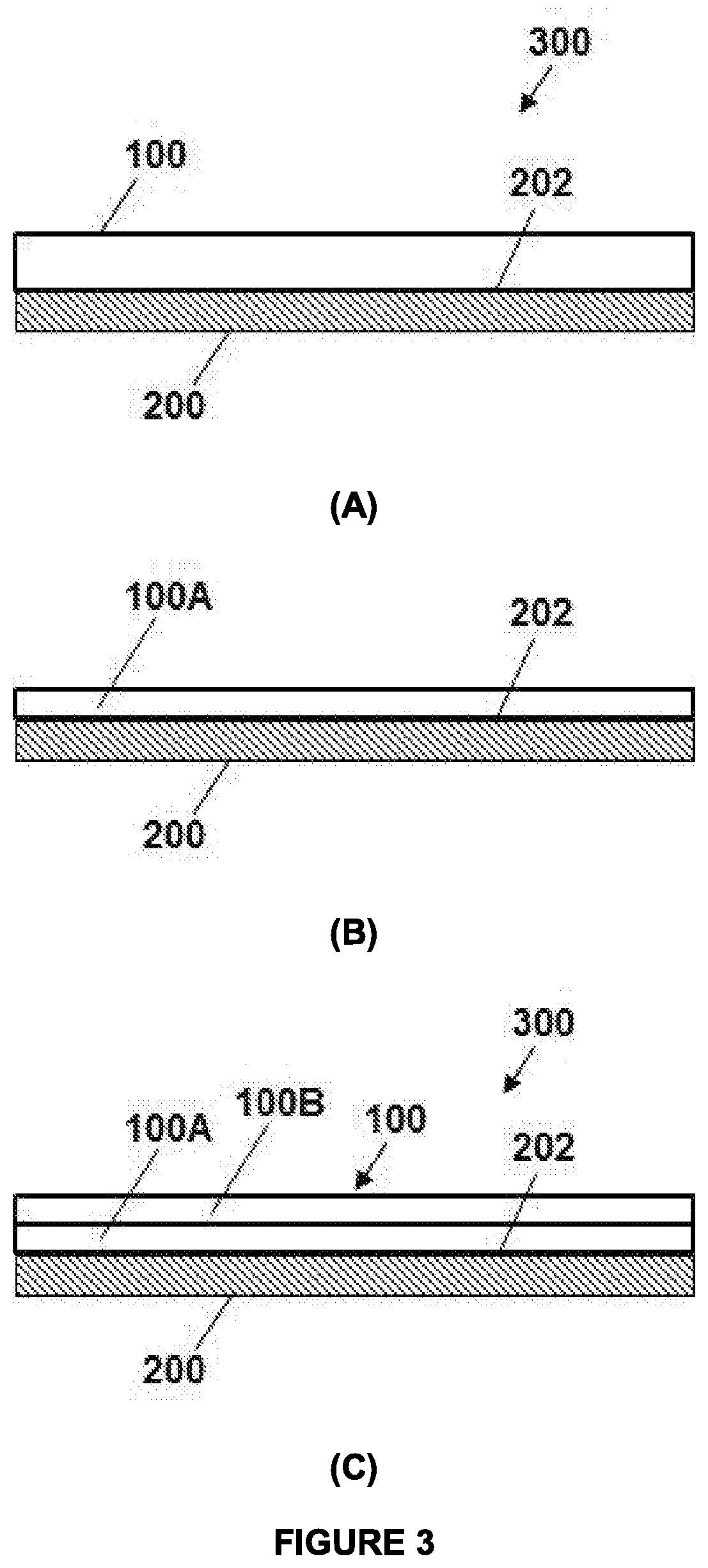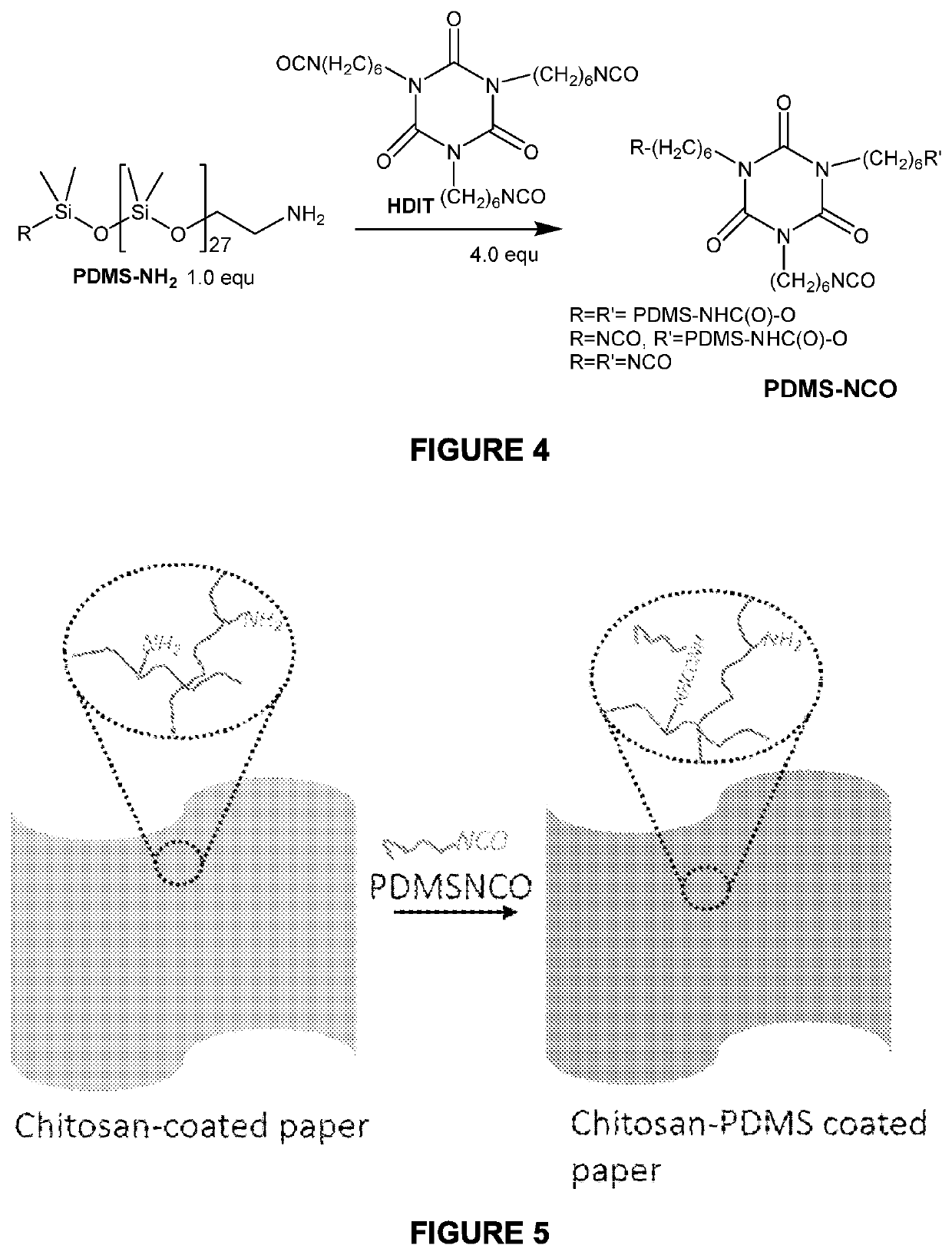Biodegradable omniphobic coatings, related articles, and related methods
a technology of omniphobic coatings and biodegradable materials, applied in the direction of coatings, liquid surface applicators, special surfaces, etc., can solve the problems of inability to maintain the effect of a long time, inability to provide optical transparency, and inability to meet the requirements of optical transparency, etc., to achieve the effect of enhancing contact, promoting micelle formation, and increasing surface area exposur
- Summary
- Abstract
- Description
- Claims
- Application Information
AI Technical Summary
Benefits of technology
Problems solved by technology
Method used
Image
Examples
example 1
c Coatings on Cellulosic Substrates
[0113]Example 1 illustrates the formation of coated, porous cellulosic (paper) substrates with an omniphobic coating according to the disclosure and including a PDMS-functionalized chitosan polymer. More specifically, the example utilizes chitosan and polydimethylsiloxane (PDMS) to create a mechanically durable, oil- and water-repelling, biodegradable coating for porous materials such as paper. Chitosan is first dissolved into acetic acid to create a liquid solution, which coats paper to reduce the amount of pores and create a smooth surface to which the PDMS can bond. Amino-functional PDMS is added drop wise to HDIT (a polyisocyanate) to create a solution of isocyanate-functional PDMS (FIG. 4). The chitosan-coated paper is then soaked in the isocyanate-functional PDMS solution to graft the polymers together via urea reaction products between isocyanate groups (on the PDMS) and amino groups (on the chitosan) (FIG. 5). The resulting coated paper sub...
example 2
Process in External Reaction Medium
[0137]Example 2 illustrates the formation of a PDMS-functionalized chitosan polymer in a one-step process in an external reaction medium, which PDMS-functionalized chitosan polymer can then be applied to a porous cellulosic (paper) substrate.
[0138]Samples 2.1-2.4: PDMS-g-chitosan as a PDMS-functionalized chitosan polymer was formed using a variety of functionalized formed of PDMS in a one-step fabrication process for use as an omniphobic coating to form water- and grease-resistant paper. For Sample 2.1, PDMS-isocyanate (NCO) was reacted with chitosan in acid-free water to form a PDMS-graft-chitosan with a urea link formation between the amino groups in chitosan and the isocyanate groups in the PDMS. For Sample 2.2, PDMS-isocyanate (NCO) was reacted with chitosan in an organic solvent to form a PDMS-graft-chitosan with a urea link formation between the amino groups in chitosan and the isocyanate groups in the PDMS. For Sample 2.3, PDMS-epoxy was rea...
example 3
Process with Micelles
[0143]Example 3 illustrates the formation of a PDMS-functionalized graft chitosan polymer in a one-step process in an external reaction medium to form micelles, which PDMS-functionalized chitosan graft polymer can then be applied to a porous cellulosic (paper) substrate to form an oil- and water-resistant coating. The coated cellulosic substrate can be re-pulped, extracted to remove the PDMS-functionalized chitosan graft polymer, and then re-formed into recycled paper.
[0144]Sample 3.1 (PDMS-g-chitosan): An isocyanate-functionalized PDMS (PDMS-NCO) stock solution was prepared by dropwise adding amino-functionalized PDMS (PDMS-NH2) solution (133 mg PDMS-NH2 with a molecular weight of about 2000 in 1 ml acetone) into hexane 1,6-diisocyanate trimer (HDIT) solution (67 mg HDIT in 1 ml acetone) under stirring. The concentration of obtained PDMS-NCO solution was recorded as 10 wt. %. A series of PDMS-NCO solutions with a constant volume (0.5 ml) containing various amou...
PUM
| Property | Measurement | Unit |
|---|---|---|
| Temperature | aaaaa | aaaaa |
| Temperature | aaaaa | aaaaa |
| Temperature | aaaaa | aaaaa |
Abstract
Description
Claims
Application Information
 Login to View More
Login to View More - R&D
- Intellectual Property
- Life Sciences
- Materials
- Tech Scout
- Unparalleled Data Quality
- Higher Quality Content
- 60% Fewer Hallucinations
Browse by: Latest US Patents, China's latest patents, Technical Efficacy Thesaurus, Application Domain, Technology Topic, Popular Technical Reports.
© 2025 PatSnap. All rights reserved.Legal|Privacy policy|Modern Slavery Act Transparency Statement|Sitemap|About US| Contact US: help@patsnap.com



